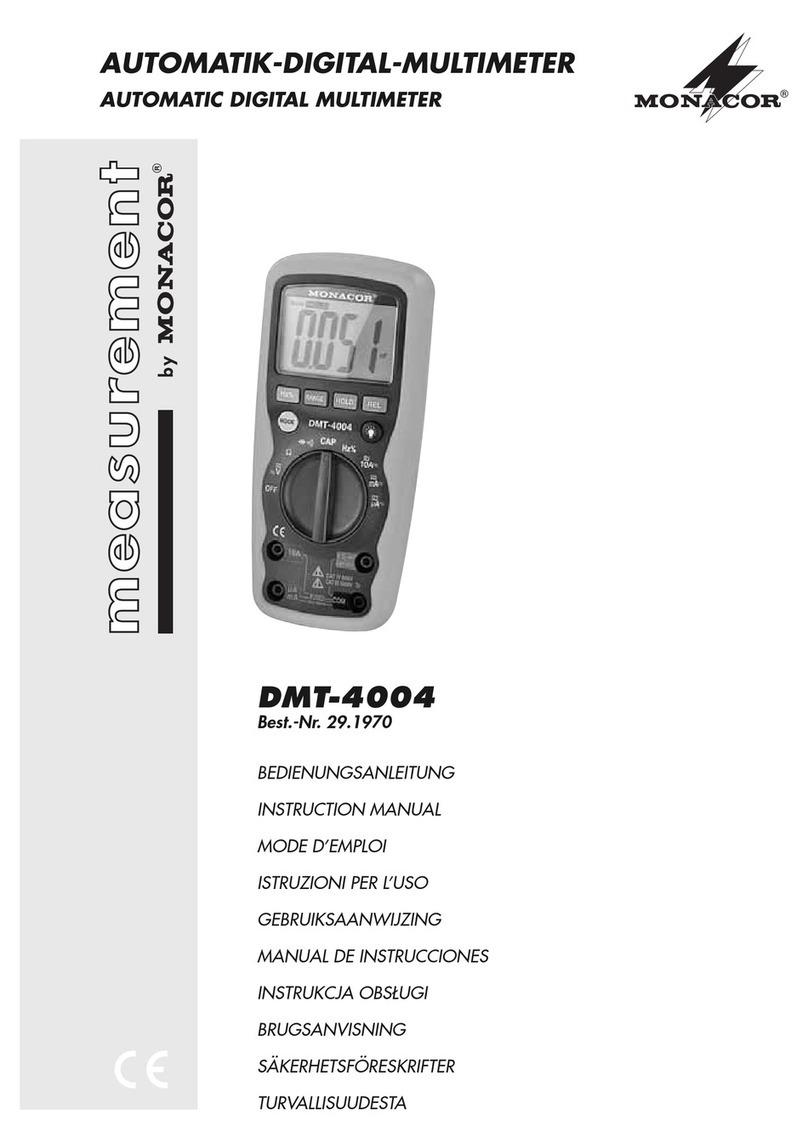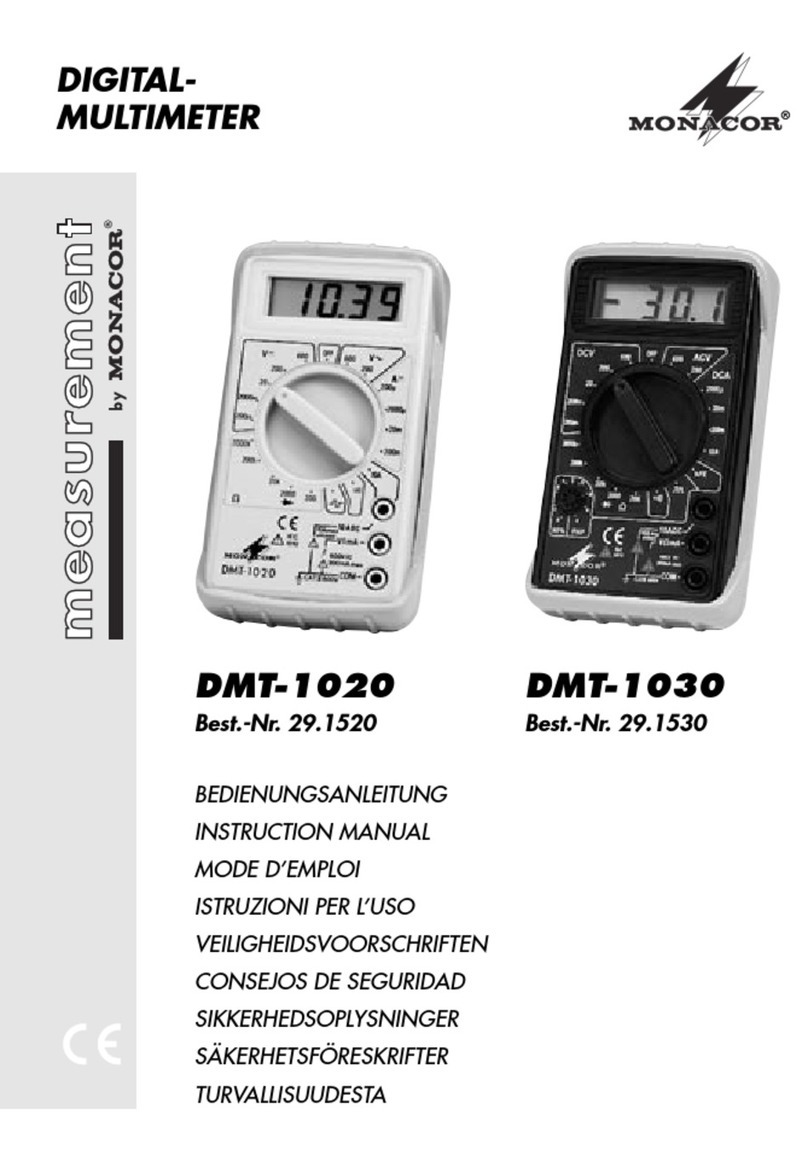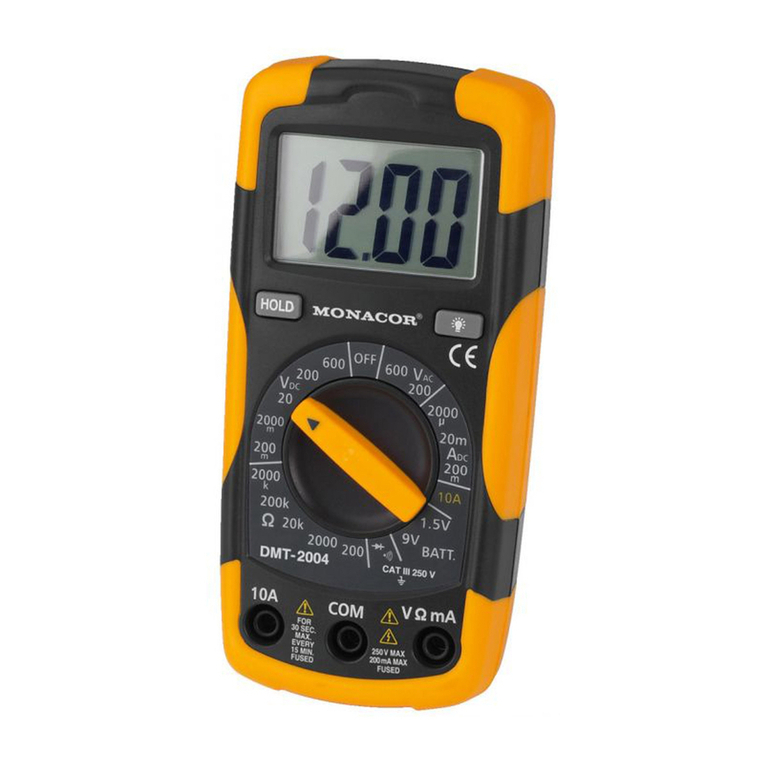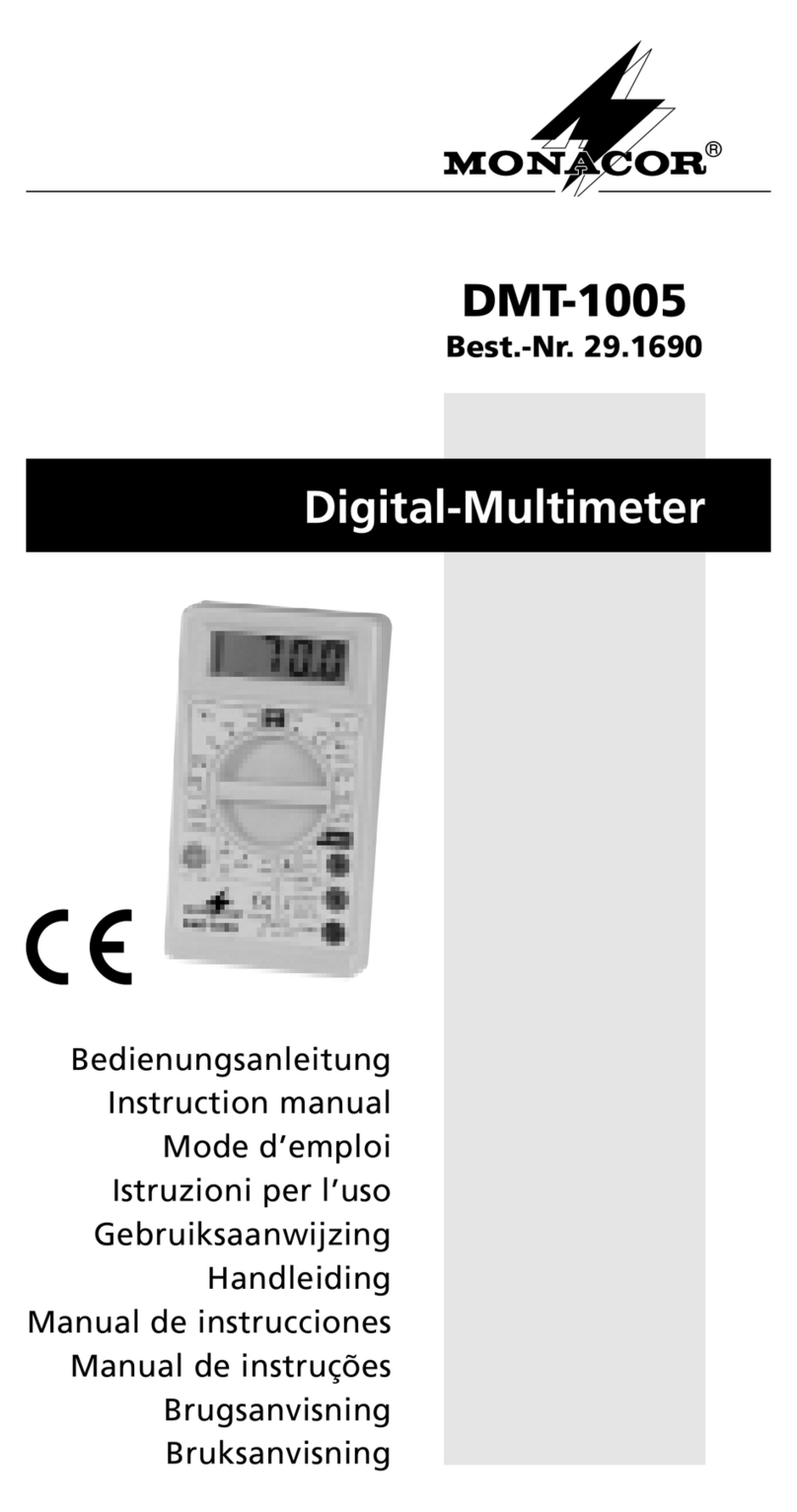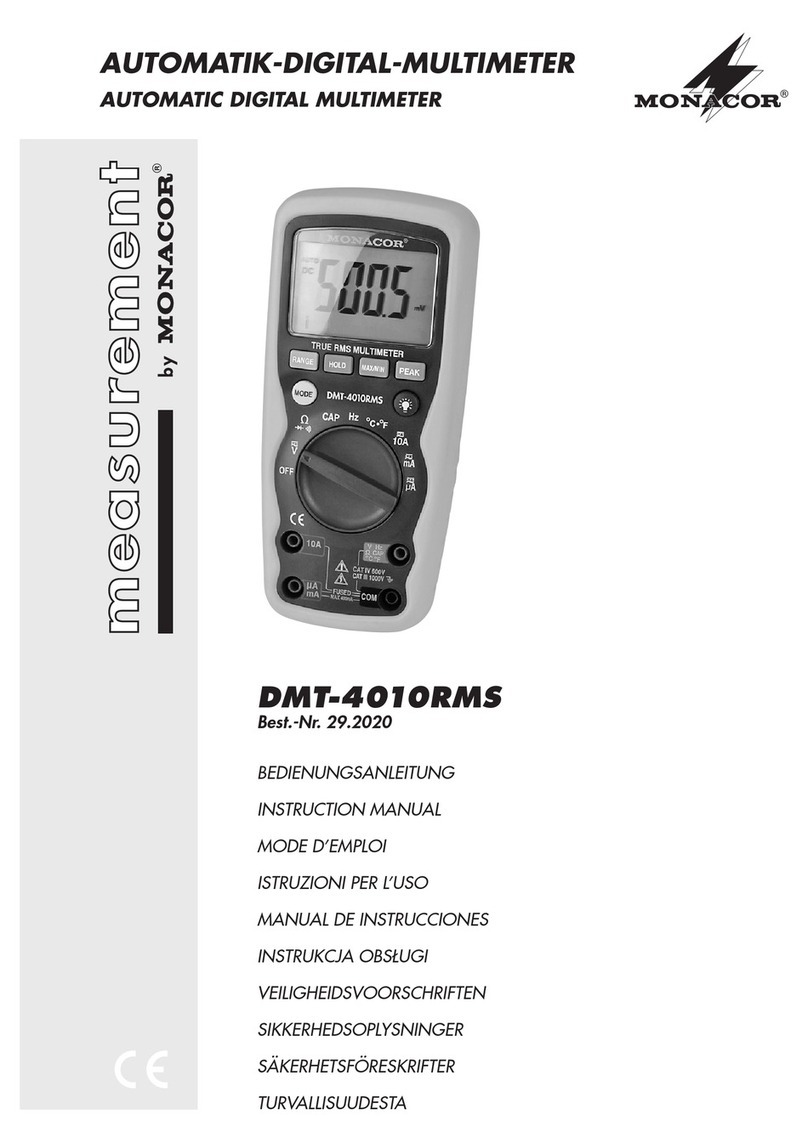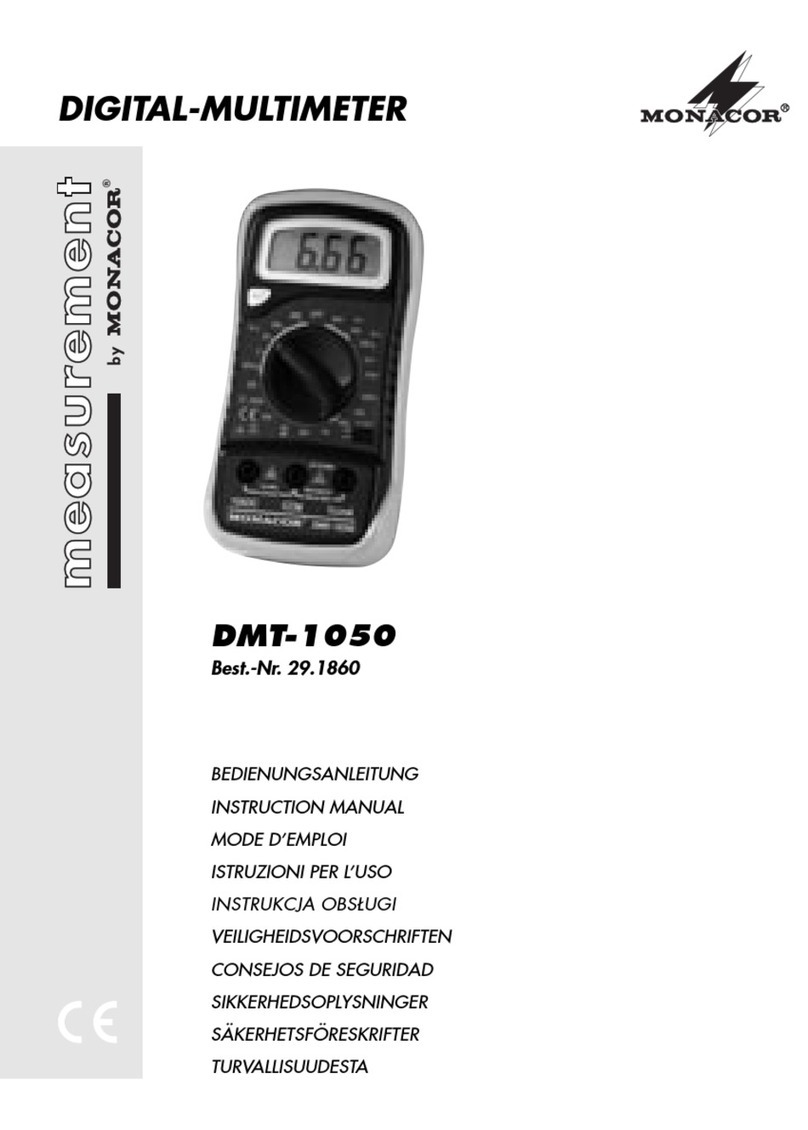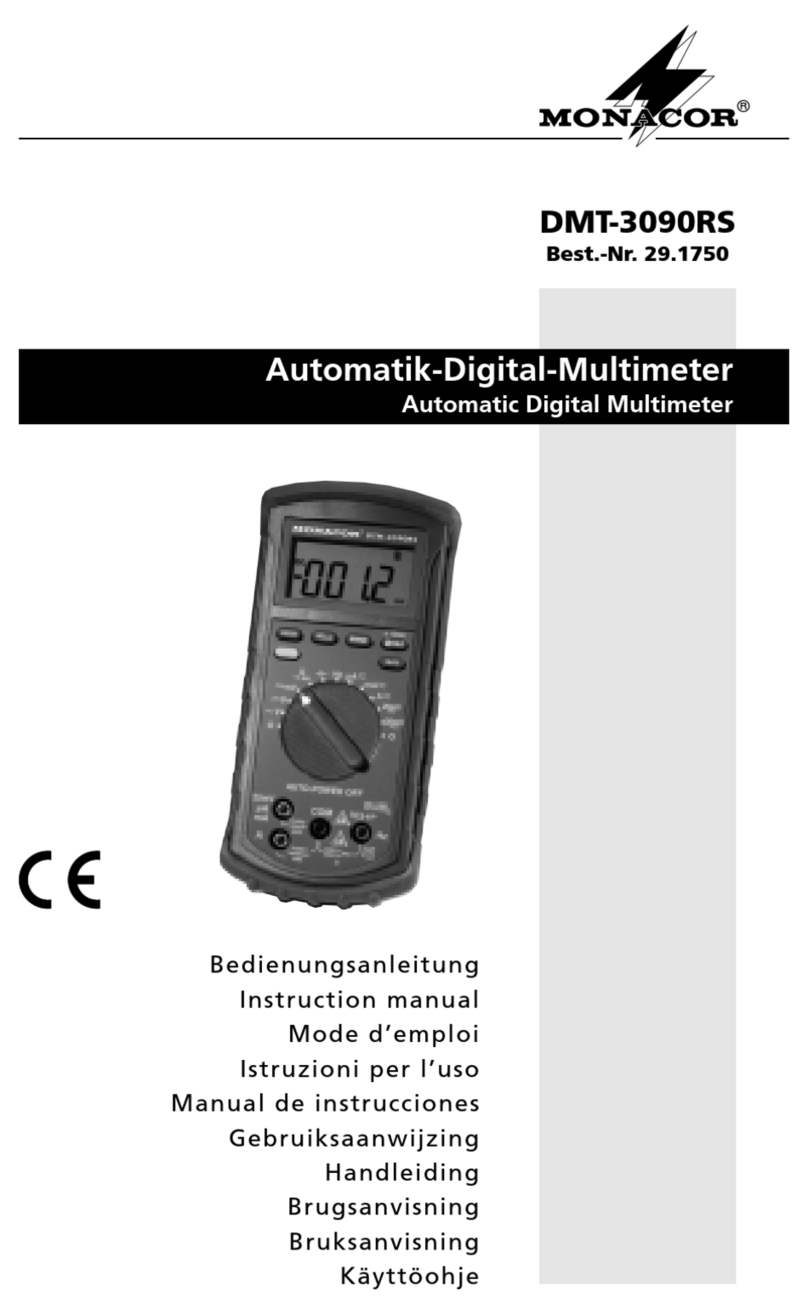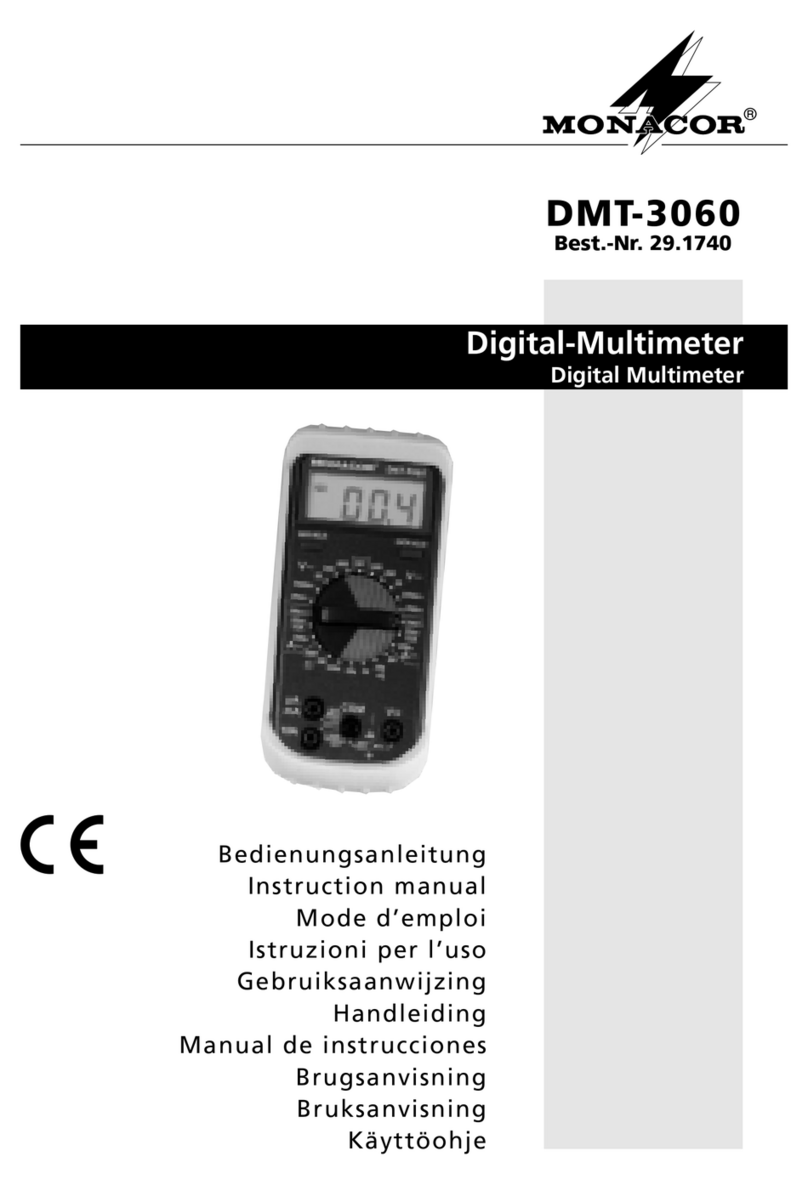7Justierschraube für den mechanischen Nullpunkt des Instru-
ments: bei ausgeschaltetem Meßgerät mit der Schraube den
Skalenzeiger auf Null justieren
8Einstellrad „OHMS ADJUST” zur 0-Ω-Eichung: den Bereichs-
schalter (1) in den gewünschten Ohmbereich stellen, die Meß-
spitzen kurzschließen, und mit dem Rad den Skalenzeiger auf
0Ωeinstellen
9Anschlußbuchse „DC10A” für die rote Meßleitung (Pluspol)
zum Messen im 10-A-Gleichstrombereich
10 Anschlußbuchse „ V.Ω.A“ für die rote Meßleitung (Pluspol) zum
Messen in allen Bereichen, außer im 10-A-Gleichstrombereich
2 Hinweise für den sicheren Gebrauch
Dieses Gerät entspricht der Richtlinie für elektromagnetische Ver-
träglichkeit 89/336/EWG und der Niederspannungsrichtlinie
73/23/EWG.
Mit diesem Instrument können lebensgefährlich hohe Spannun-
gen gemessen werden. Bei Messungen von Spannungen ab
42V ist besondere Sorgfalt geboten. Achten Sie stets auf den
einwandfreien Zustand der Meßleitungen. Beschädigte Meßlei-
tungen müssen ausgetauscht werden.
Beachten Sie für den Betrieb auch unbedingt die folgenden Punkte:
●Das Gerät ist nur zur Verwendung in Räumen geeignet.
●Schützen Sie das Gerät vor Feuchtigkeit und Hitze (zulässiger
Einsatztemperaturbereich 0–40°C).
●Wird das Gerät zweckentfremdet, falsch bedient bzw. ange-
schlossen, überlastet oder nicht fachgerecht repariert, kann für
eventuelle Schäden keine Haftung übernommen werden.
●Für die Reinigung nur ein trockenes, weiches Tuch verwenden,
auf keinen Fall Chemikalien oder Wasser.
●
SolldasGerätendgültig aus dem Betrieb genommen werden, über-
geben Sie es zur Entsorgung einem örtlichen Recyclingbetrieb.
3 Verwendungsmöglichkeiten
Dieses Vielfachmeßinstrument dient zur Messung von Gleich- und
Wechselspannungen, Gleichströmen, Widerständen sowie Dezi-
bel. Außerdem lassen sich 1,5-V-Mignon- und 9-V-Batterien über-
D
A
CH
5
